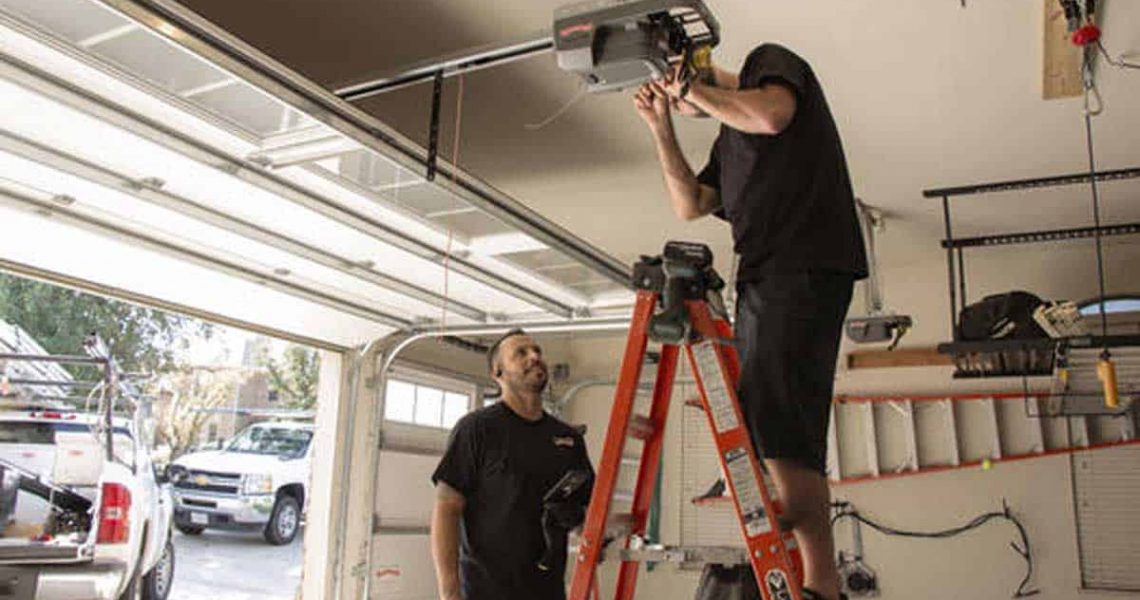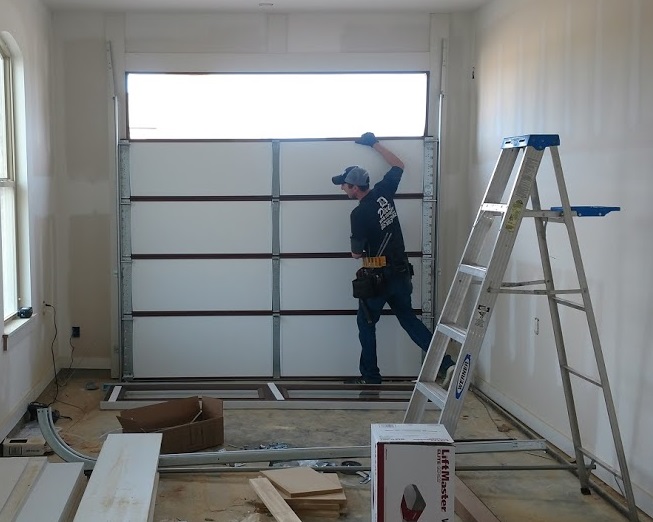How to maintain your garage doors nanaimo based on material type
How to maintain your garage doors nanaimo based on material type
Blog Article
Common Troubles and Solutions for Homeowners With Garage Doors
As a property owner, you may deal with a number of usual garage door concerns that can interrupt your daily regimen. From malfunctioning openers to noisy operation, these issues can be discouraging. Fortunately, several options are straightforward and can save you money and time. Some issues might need specialist assistance. Let's check out the most frequent garage door issues and exactly how you can tackle them successfully.
Malfunctioning Garage Door Openers
When your garage door opener begins acting up, it can be discouraging, especially if you depend on it daily. You could locate that it doesn't respond to your remote or the door opens up and shuts erratically. If that's not the problem, inspect the opener's power source.
If you still experience issues, try to find any type of indications of endure the gears or electric motor. A defective opener may need lubrication and even a replacement part. Do not hesitate to consult your customer manual for repairing suggestions particular to your model, or think about calling a professional if the problem persists. Taking these steps can help recover your garage door's performance in no time.
Misaligned Garage Door Tracks
If your garage door isn't opening up or shutting efficiently, misaligned tracks could be the culprit. Common reasons consist of damage or accidental bumps that interrupt the positioning. Luckily, taking care of these track issues can restore your door's feature and keep it running securely.
Root Causes Of Misalignment
Misalignment of garage door tracks can take place for a number of reasons, usually leading to irritating operational concerns. If your garage door gets bumped or hit, that influence can misalign the tracks. Recognizing these reasons can assist you recognize why your garage door isn't working efficiently.
Taking Care Of Track Problems
Fixing track issues with misaligned garage doors calls for a cautious approach to guarantee smooth procedure. Evaluate the tracks for bends or particles that could block activity. Make use of a degree to inspect if the tracks are directly; if not, delicately touch them back into positioning with a rubber club. Next off, verify the braces holding the tracks are limited; loosened screws can trigger imbalance. If the tracks are considerably harmed, take into consideration changing them. When straightened, oil the tracks with a silicone-based spray to minimize friction. Lastly, test the garage door's procedure to verify it opens and shuts efficiently. Regular maintenance will aid avoid future track issues and keep your garage door operating correctly.
Broken Springs
When your garage door unexpectedly rejects to open or shut, it's commonly due to broken springtimes. These springs bear the weight of the door, making it simple for you to lift or decrease it. If they snap, you'll observe that your door feels heavy or won't budge at all.
To confirm the issue, aesthetically evaluate the springtimes for voids or breaks. If you believe they're broken, do not attempt to repair them yourself, as they're under high stress and can trigger injury. Rather, call an expert who can safely change the springs.
Regular maintenance can aid stop spring failing, so keep an eye on their problem and oil them periodically. If you're experiencing regular springtime issues, consider upgrading to higher-quality springtimes that can withstand more wear and tear. This positive approach can conserve you money and time in the future, guaranteeing your garage door runs efficiently.
Noisy Garage Doors
After dealing with issues like busted springtimes, you might observe one more usual trouble: loud garage doors. If your garage door squeaks, rattles, or moans, it can be fairly frustrating, especially if it's interrupting your peace. The sound usually comes from damaged rollers, loose hardware, or absence of lubrication.
Beginning by inspecting the rollers and joints. If they're dirty or harmed, cleaning up or replacing them can greatly lower sound. Next, look for loose screws or screws; tightening them can eliminate rattling audios. Don't neglect to lubricate the relocating get rid of a silicone-based spray or garage door lubricant. This will help minimize friction and noise.
If your door still seems like a dinosaur, think about seeking advice from a professional. Normal upkeep can avoid loud garage doors and prolong their lifespan, guaranteeing you delight in a quieter, smoother operation.
Garage Door Remote Issues
Numerous home owners experience frustration with garage door remote concerns at some factor. If your remote isn't working, the primary step is to examine the batteries. Weak or dead batteries are usually the wrongdoers. Replace them and see if that solves the problem. If the remote still will not work, attempt reprogramming it. Consult your garage door opener manual for details directions.
Sometimes, disturbance from other electronics can influence your remote. Inspect for any type of close-by tools that could be causing a signal interruption. If that does not help, check the remote for physical damage, like splits or busted buttons.
One more typical issue is distance; you may merely be as well far from the garage door. Make certain you're more helpful hints within array when trying to run it. If all else falls short, consider getting in touch with an expert for support. They can detect and fix any type of hidden issues with your garage door system.
Climate Stripping Troubles
If you observe drafts, water leakages, or increased energy costs, your garage door's weather removing could be put on out. Recognizing exactly how to identify signs of wear and knowing installment pointers can assist you keep an appropriate seal - garage doors nanaimo. When it's time for a replacement, you'll have lots of alternatives to pick from
Signs of Wear
As you utilize your garage door over time, the climate stripping can begin to reveal indicators of wear, which is crucial to address. If you notice the removing is weak or tearing away from the door, it's time to take activity. You might additionally find that your garage door does not secure correctly, leading to increased power expenses or parasite troubles.
Installment Tips
When you notice endure your garage door's weather stripping, addressing the installation can make a considerable distinction. Initially, confirm you have the right kind of climate stripping for your garage door. Measure the door accurately to cut the removing to the appropriate length. Tidy the surface where you'll use the weather condition stripping, getting rid of any dirt or debris to ensure a solid bond. Utilize a top notch sticky or comply with the producer's guidelines for installation. Make sure it's aligned properly to seal voids efficiently. Routinely examine the installment for any type of signs of damage or detachment. By focusing on these details, you'll improve your garage door's insulation and safeguard your home from the elements.
Replacement Options
While you may have mounted your garage door's weather condition removing properly, deterioration can still cause issues that demand substitute. If you observe drafts, dampness, or pests entering your garage, it's time to consider new weather condition stripping. Search for alternatives like vinyl or rubber products, which offer better insulation and resilience. Step your door's measurements precisely to assure a proper fit, and choose self-adhesive strips for very easy setup. If you prefer a more robust option, think of hiring a specialist to mount a new limit seal. Routinely examining and changing weather condition stripping not just boosts your garage's power performance however additionally protects it from damages. Don't wait till you encounter larger issues-- act currently!
Sensor Malfunctions

Start by checking the sensing unit positioning. Make certain both sensors deal with each other and are level. If they're not, change them till they are. Next, clean the sensor lenses with a soft towel to eliminate any link type of dust or debris that might obstruct their view.
If the sensing units show up intact yet the door still won't shut, it might be time to change them. With a little troubleshooting, you can usually solve sensing unit concerns and obtain your garage door functioning smoothly once more.
Frequently Asked Inquiries
Just how Usually Should I Maintain My Garage Door System?
You should maintain your garage door system at least two times a year. Normal checks for wear, lubrication of moving components, and changing the tracks can keep it functioning efficiently and expand its life-span significantly.
Can I Set Up a Garage Door Myself?
Yes, you can mount a garage door on your own, however it requires cautious preparation and the right devices. See to it you follow the supplier's instructions carefully and take into consideration safety preventative measures to stay clear of crashes during installation.
What Is the Typical Life Expectancy of a Garage Door?
The average lifespan of a garage door is commonly 15 to 30 years, relying on products and maintenance. If you take care of it well, you can maximize its long life and enjoy dependable performance.

Just how Do I Choose the Right Garage Door?
When you choose the ideal garage door, think about products, design, and insulation. Assume regarding your home's style, spending plan, and upkeep requirements. Do not fail to remember to inspect local guidelines and energy efficiency rankings for optimal efficiency.
Are There Energy-Efficient Garage Door Options Available?
Yes, there are energy-efficient garage door choices available. You can choose shielded doors, which help preserve your garage's temperature level, or look for designs with a high R-value to improve energy efficiency and lower power expenses.
Report this page